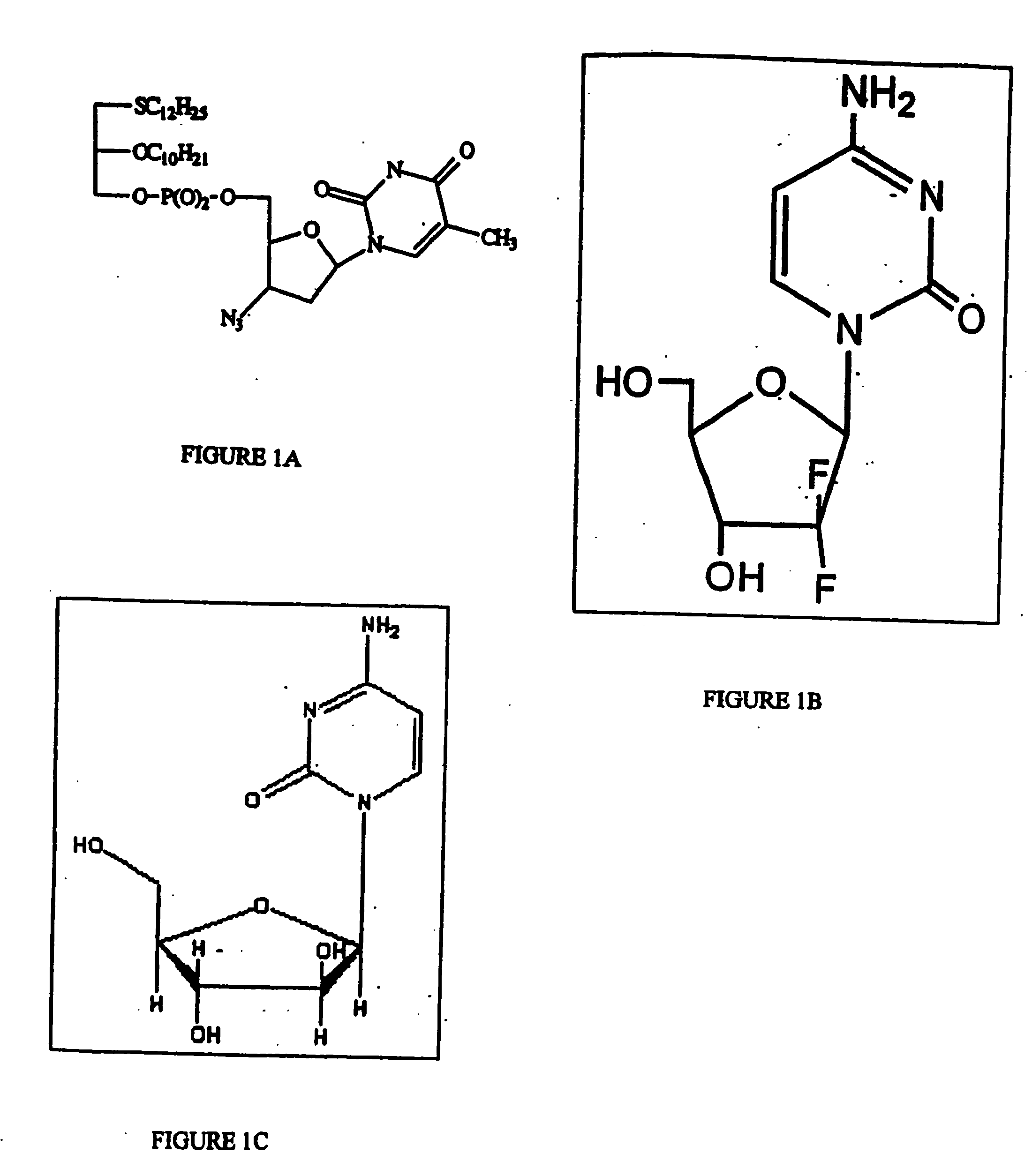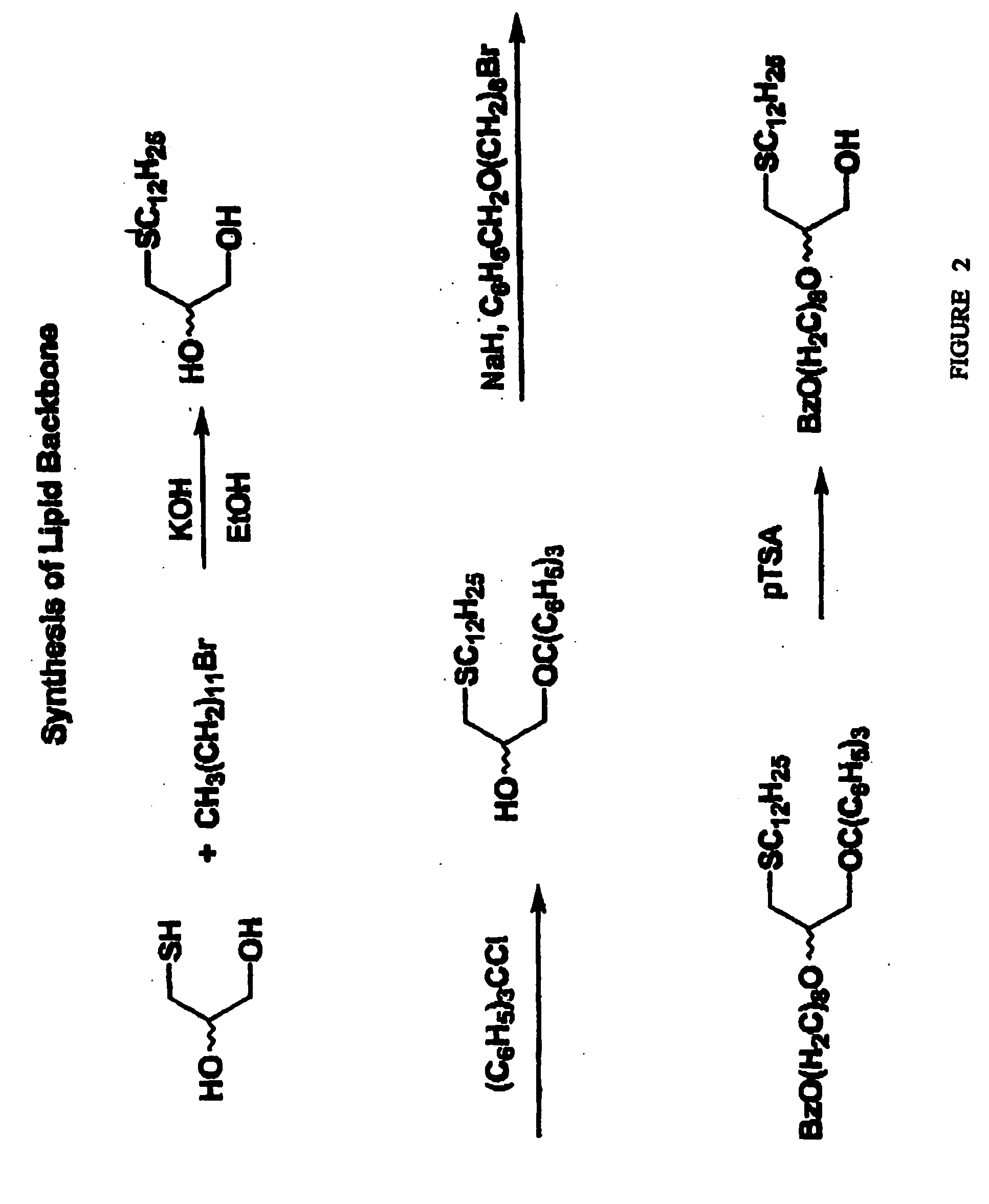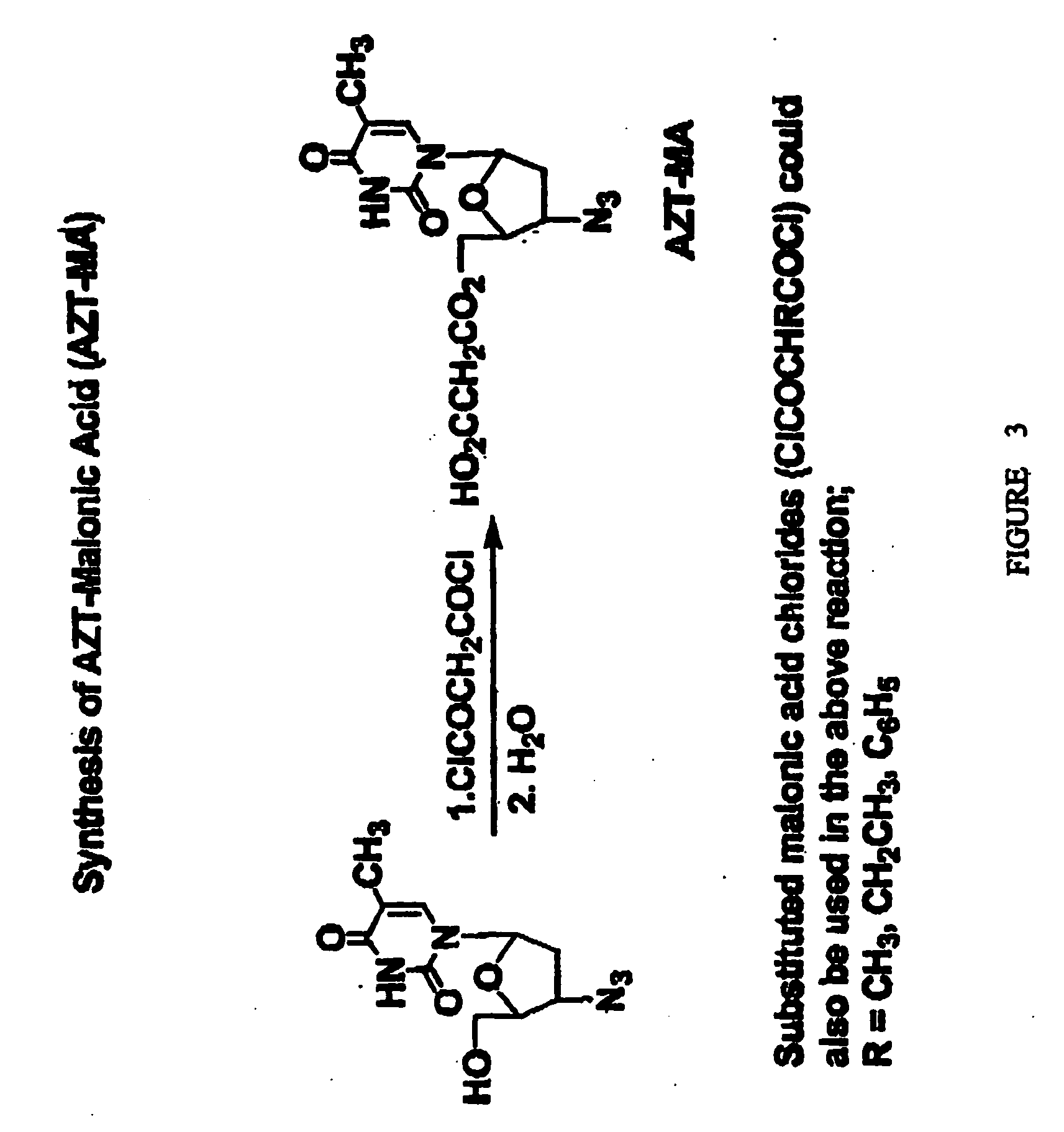Compositions and methods for targeting cancer cells
a cancer cell and composition technology, applied in the field of compositions and methods for targeting cancer cells, can solve the problems of limited clinically approved drugs, no cure, and aids responsible for a rapidly growing fatality rate in the world population, and achieve the effects of facilitating the delivery of therapeutic agents to the cell, and reducing the risk of cancer
- Summary
- Abstract
- Description
- Claims
- Application Information
AI Technical Summary
Benefits of technology
Problems solved by technology
Method used
Image
Examples
example 1
Anti-HIV-1 Activity of Double-Targeting PC Lipid-AZT Conjugate Compounds
[0342] The inhibitory effects of PC lipids, non-PC lipid-AZT conjugates, and double-targeting PC lipid-AZT conjugate compounds of the invention on replication of HIV-1 virus in cells was examined using the plaque assay procedure described in Kucera et al. (1990, AIDS Research and Human Retroviruses, 6:491). CEM-SS cells were seeded at 50,000 cells per milliliter in RPMI growth medium as a monolayer in 96-well dishes, inoculated with 50 to 100 plaque forming units of HIV-1 and overlaid with serial dilutions of either PC lipid, non-PC lipid-AZT conjugate, or PC-lipid-AZT conjugate in RPMI-1640 growth medium supplemented with 10% fetal bovine serum. The structures of the tested compounds are described in Table 1. AZT and PC lipids were used as positive controls. Plaques were counted after incubating the dishes for five days at 37° C. to determine the 50% effective concentration (EC50) for the compounds tested. The...
example 2
Sensitivity of AZT-Resistant Human Clinical Isolates of HIV-1 to PC Lipids Alone and Double Targeting PC Lipid-AZT Conjugate Compounds
[0346] Sensitivity of AZT-resistant clinical isolates of HIV-1 to PC lipid alone (INK-17 and INK-18), non-PC lipid-AZT conjugate (INK-19) and a double-targeting PC lipid-AZT conjugate compound of the invention (INK-20) was evaluated in matched pairs of clinical isolates of HIV-1 obtained before (“pre-AZT”) and after (“post-AZT”) administration of AZT to HIV-1 infected humans. Isolates of HIV-1 obtained following administration of AZT included AZT-resistant virus particles. Evaluation of the clinical isolates to the compounds was performed using the plaque assay procedure described herein in Example 1. The matched pairs of clinical isolates were obtained through the AIDS Research and Reference Reagent Program, NIH, Bethesda, Md. The results of these assays are presented in Table 3. The data demonstrate that the double-targeting compound of the inventi...
example 3
Anti-Herpes Simplex Virus Type 2 Activity of Double-Targeting PC Lipid-AZT Conjugate Compounds
[0347] Proof-of-concept of the antiviral activity of the double-targeting PC lipid-AZT conjugate compounds of the invention with respect to herpes simplex virus type 2 was evaluated and compared with that of PC lipid alone and with acyclovir (positive controls). Serial dilutions of PC lipid, PC lipid-AZT conjugate compound, or acyclovir were evaluated for inhibition of the formation of herpes simplex virus type 2 plaques in Vero cells and EC50 values were calculated from the results obtained. Briefly, the tests for anti-herpes simplex virus (HSV) activity and cytotoxicity of the compounds were performed by seeding 8×104 monkey kidney cells (Vero) per ml of D-MEM with 10% fetal bovine serum (FBS) in each well of a 12-well dish. The cultures were incubated at 37° C. to form a complete monolayer. To measure anti-HSV activity and effective concentration so (EC50) each cell monolayer was infect...
PUM
| Property | Measurement | Unit |
|---|---|---|
| temperature | aaaaa | aaaaa |
| rectal temperature | aaaaa | aaaaa |
| diameter | aaaaa | aaaaa |
Abstract
Description
Claims
Application Information
 Login to View More
Login to View More - R&D
- Intellectual Property
- Life Sciences
- Materials
- Tech Scout
- Unparalleled Data Quality
- Higher Quality Content
- 60% Fewer Hallucinations
Browse by: Latest US Patents, China's latest patents, Technical Efficacy Thesaurus, Application Domain, Technology Topic, Popular Technical Reports.
© 2025 PatSnap. All rights reserved.Legal|Privacy policy|Modern Slavery Act Transparency Statement|Sitemap|About US| Contact US: help@patsnap.com



